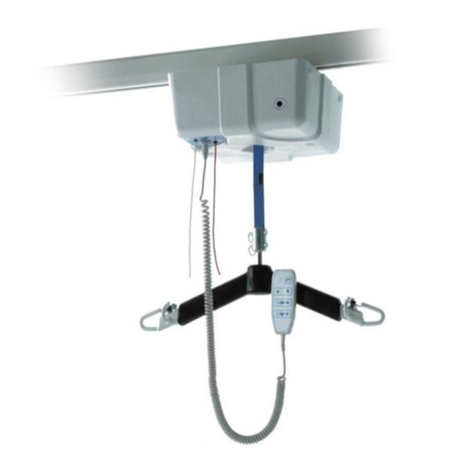
Oxford Range of Mobile Hoists
10
Safety Precautions
Please read and follow the safety precautions listed below. The operation and use of
Oxford patient lifts is simple and straightforward. Following these few basic safety
precautions will make lifting operations easy and trouble free.
• ALWAYS plan your lifting operations before commencing.
• ALWAYS carry out the DAILY CHECK LIST before using the lift.
• ALWAYS familiarise yourself with the operating control and safety features of a lift
before lifting a patient.
• DO NOT use a sling unless it is recommended for use with the lift.
• ALWAYS check the sling is suitable for the particular patient and is of the correct size
and capacity.
• NEVER use a sling which is frayed or damaged.
• ALWAYS t the sling according to the instructions in the user manual.
• ALWAYS check the safe working load of the lift is suitable for the weight of the
patient.
• ALWAYS carry out lifting according to the instructions in the user manual.
• NEVER disconnect or bypass a control or safety feature because it seems easier to
operate the lift.
• NEVER force an operating or safety control. All controls are easy to use and do not
require excessive force to operate. If a control is not working easily there will be a
reason. Forcing will only strain or damage the lift and may compromise safety.
• DO NOT lift a patient with the castor brakes on.
• DO NOT attempt to manoeuvre the lift by pushing on the mast, boom or patient.
• ALWAYS manoeuvre the lift with the handle provided.
• ALWAYS lower the patient to the lowest comfortable position before transfers.
• DO NOT push a loaded lift at speeds which exceed a slow walking pace
(3 Kilometres/hour 0.8 metres/second).
• DO NOT push the lift over uneven or rough ground. particularly if loaded.
• DO NOT attempt to push or pull a loaded lift over a oor obstruction which the
castors are unable to ride over easily.
• DO NOT bump the lift down steps, loaded or unloaded.
• DO NOT attempt to negotiate a loaded lift on a slope which exceeds 1:12
(approximately 5 degrees). Sunrise Medical recommend a second helper is present
when moving a patient on a slope.





























